Seems like it takes far less time to build and drill an oil and gas well than for nearby residents to get relief from the consequences. At least that’s what the Tiberie family of Scenery Hill, Pennsylvania found out the hard way. Consider this:
Seven official complaints spanning 15 months. Trips to the state capitol and three public appearances to address environmental regulators and legislators. Half a dozen interviews with national and local reporters. Three inspections by state regulators. Countless calls to EQT, the well operator, and one urgent call to the fire department. Independent air and water tests. Monthly meetings and hearings at the township building, leading to a run for township supervisor. A bus tour with concerned supporters hailing from as far off as California, and a visit from Brazilian engineering researchers seeking information on the impacts of Pennsylvania’s shale development.
Dale Tiberie’s journey is instructive of why Pennsylvanians so desperately need protection from the impacts of oil and gas on their air, health, and lives. It also clearly demonstrates why the state must adopt strong rules to rein in the runaway development that’s putting more and more families in the same unacceptable position.
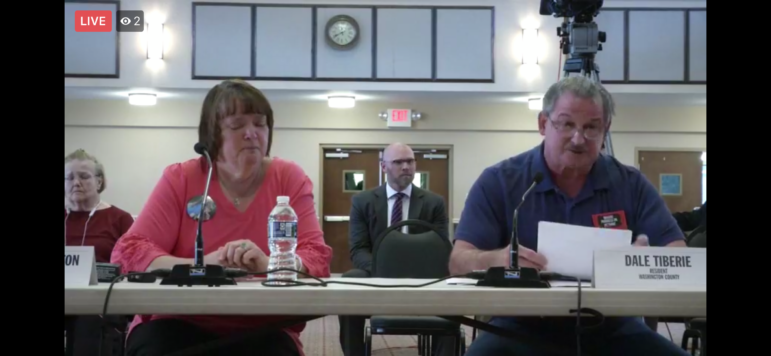
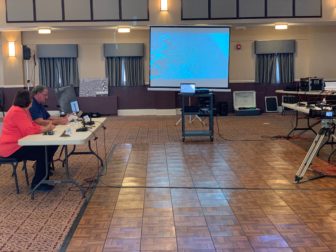
The Tiberie’s problems started in 2014 – before they started thinking in terms of “air emissions” and “methane pollution” – when pipeline construction encircled their rural home and deprived them of their formerly steady flow of clean well water. After much effort by Dale to get EQT to replace his well water with a connection to the city water system, their home became livable again. But in the interim, construction began on shale gas wells merely 500 feet from the Tiberie’s back door. Once the wells were operational, Dale began to notice strange odors that seemed to be wafting down from the well pad, named “Mad Dog 2020.” He observed changes in his health, such as a perpetually runny nose and dizziness when outside during the worst of the odors.
Dale invited Earthworks to come check on the well pad with our optical gas imaging (OGI) camera – a highly specialized, industry-standard tool that allows us to make visible the normally unseen air pollution released by oil and gas operations. The camera reveals a host of gases, including many with known health risks and the powerful greenhouse gas, methane. With visible proof of the pollution he and his family were living next to, Dale became more determined than ever to protect his family and his formerly idyllic rural property.
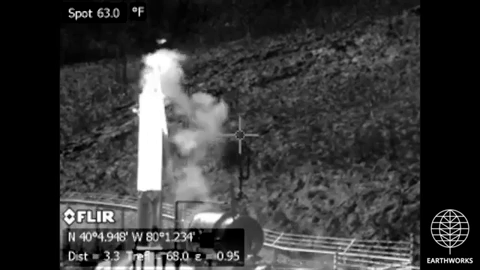
Our first OGI inspection, in March 2018, revealed a pipe close to the ground spewing out dense, heavy pollution. Dale and I filed written complaints with the Department of Environmental Protection (DEP), which responded with an inspection of the site. DEP required EQT to fix the leak. EQT removed the offending pipe and replaced it with a large, bright-white tank and new pipes. According to EQT, this was the first installation of that specific equipment in the state, and this “BTEX” tank was supposedly going to capture pollution and solve the problem of odors and the toxic releases they represent. (BTEX is an acronym for the carcinogenic compounds benzene, toluene, ethylbenzene, and xylene.
Unfortunately, EQT’s promise proved false. The hydrocarbon odors continued. Earthworks returned with the OGI camera, which revealed plumes of pollution wafting from the shiny new “BTEX tank.”

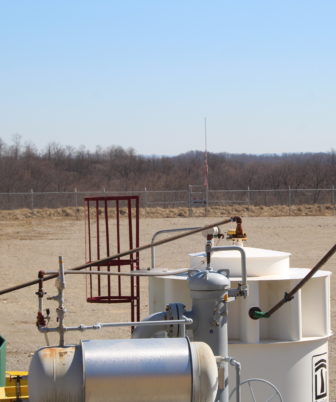
My alarmed calls and fresh complaints to DEP prompted an investigation with their own OGI camera, confirming the pollution. According to DEP, EQT had left a hatch on the tank ajar. This was an easy fix, it seemed, and we were assured that the EQT staff had been required to add it to their daily site-inspection checklist.
For months, Dale was bewildered and frustrated by further odors and respiratory symptoms which plagued him every time he ventured outside to tend his garden or watch the deer and turkeys that traversed his wooded backyard. The Earthworks team returned with the OGI camera once again, and again documented a leak from the exact same open tank hatch. When we reported this to DEP, agency staff suggested that a change of ownership at the well pad (EQT had bought out former owner Rice Energy) had caused the operator’s inspection schedule to fall through the cracks. In other words, corporate giants were unable to conduct basic, required inspections–designed to protect air quality and health–because of administrative squabbles.
One full year after the first time Earthworks filmed the Mad Dog 2020 pad with the OGI camera, we filmed the leaking BTEX tank yet again and reported it to DEP. Earthworks’ thermographer Pete Dronkers used software tools designed to quantify the leak, and calculated an average rate of 69 pounds of pollution per hour.
In June 2019, Dale sent me a text that something was happening at the well pad–the site was swarming with trucks, workers, and heavy equipment. Our team returned, OGI camera in hand, ready to record the latest pollution. But we didn’t need it. When we got to the site, EQT workers were busily dismantling the northern corner of the pad. The familiar white tank now appeared to be slated for removal. The OGI camera revealed no emissions, nor heat coming from the normally active components of the site, and the wells appeared to be offline.
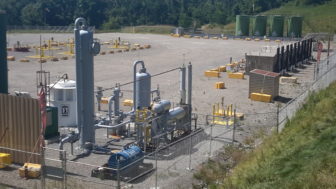

Later that week, the flurry of workers and trucks–and the white BTEX tank–were gone. We were relieved–but not nearly as much as Dale and his family, who hoped for some much-needed respite. But such hopes were quickly dashed; within days, Dale noticed more odors. Ongoing conversations with DEP indicate that these could be coming from any number of sources — some other component on the Mad Dog pad, the network of gas pipes old and new in the area, or something else.
Dale’s story is a painful example of how incredibly hard it is to get oil and gas companies to fix even basic problems in their operations. It’s also proof of how badly Pennsylvania–the second largest gas-producing state in the nation–needs real rules, consistently and aggressively enforced, to help protect the health of people living dangerously close to the nearly 12,000 shale gas wells and 100,000 more conventional wells, compressors, processing plants, and other facilities statewide. Such rules must also address methane, which is drastically accelerating the climate crisis. As the Trump administration moves aggressively to eliminate federal regulation of methane, states must step up with their own protections. The Tiberie family and their fellow Pennsylvanians deserve swift action.


